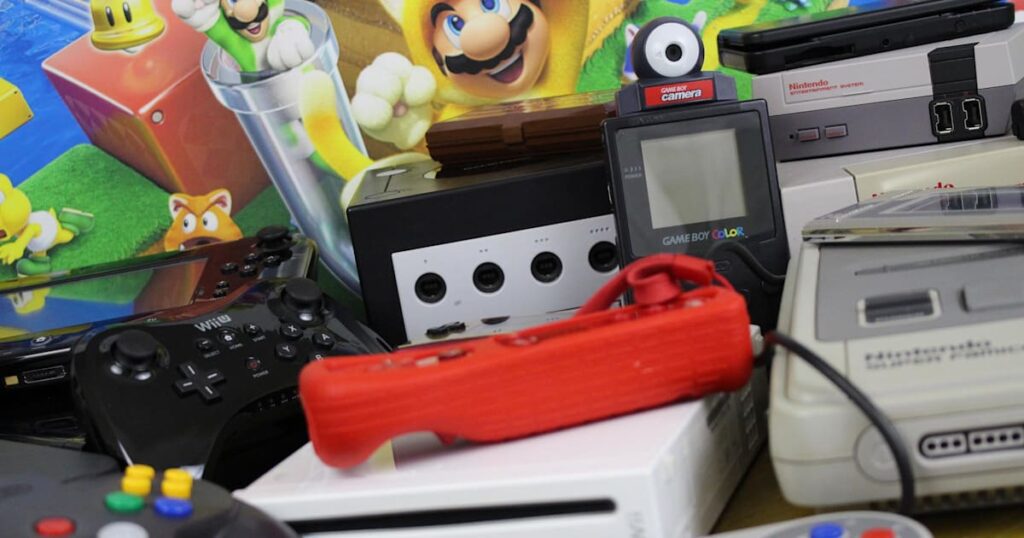The Nintendo Co. Ltd. is a Japanese video game company based in Kyoto, Japan. It is the world’s oldest video-game corporation that was founded in 1889 by Fusajiro Yamauchi and was initially called Nintendo Karuta. But did you know that Nintendo pushed consumers to use the term game console instead?
Nintendo campaigned that consumers use the term “game console” so that their competitors could not label their products as “Nintendos” which would ultimately affect their trademark.
The History of Nintendo
The Nintendo Co. Ltd originally made card games, but from the 1960s onwards, it tried its hand at a variety of various businesses before settling on the lucrative video game industry, where it would eventually make its mark.
Since its founding, Nintendo has produced some of the most successful consoles in the video game industry, such as the Game Boy, the Super Nintendo Entertainment System (SNES), the Nintendo DS, the Wii, and the Switch.
They are also responsible for various gaming franchises such as Super Mario, Donkey Kong, The Legend of Zelda, Pokemon, Kirby, Animal Crossing, and Super Smash Brothers. Mario is Nintendo’s official mascot and one of the most iconic figures in the gaming industry. (Source: Nintendo)
What Are the Different Consoles Under Nintendo?
Throughout the years, Nintendo has come up with revolutionary gaming consoles that genuinely changed the way gaming enthusiasts played. Here are some of the more popular gaming consoles released by the company.
Nintendo Entertainment System (NES)
Nintendo ultimately decided to enter the world of console manufacture by 1983, and the Nintendo Family Computer, popularly known as the FamiCom, was born. The system was a big success. Sega’s SG-1000 line of consoles, which was its only domestic competition, was swiftly surpassed. Nintendo also planned to bring the FamiCom to the United States; however, the American retailers were uninterested in any video-game systems.
Nintendo extensively modified the FamiCom and used creative phrasing and accessory placement to successfully promote the system in the United States as both a home computer and a toy.
Super Nintendo Entertainment System (SNES)
The Nintendo Entertainment System, abbreviated as the NES, was the revised console’s name. The launching of the system in 1985 was a major success, thanks to the famous Super Mario Bros. The system re-awakened the video-game market in the United States, as well as kicking off the third and final generation of Nintendo’s 8-bit systems.
Sega Mega Drive (also known as Genesis) debuted in 1988 and raised the bar on video gaming. Soon after, Nintendo responded by producing its own 16-bit platform. The Super FamiCom was released in 1990. Like its predecessor, it was marketed to the general public as the Super Nintendo Entertainment System, sometimes known as SNES, Super NES, or just Super Nintendo.
Nintendo 64
Nintendo was the last manufacturer to introduce a fifth-generation (32/64-bit) system. Both the Sega Saturn and the Sony PlayStation were released in 1995, but it was evident by the following year that the PlayStation would be the winner. Nintendo didn’t release Nintendo 64 in Japan until late 1996, and the rest of the globe got it in 1997. The console was a massive hit during its first two years on the market, with games including Super Mario 64, Banjo-Kazooie, Star Fox 64, and The Legend of Zelda: Ocarina of Time. However, the PlayStation quickly surpassed the platform in popularity since Resident Evil, Metal Gear Solid, and Final Fantasy VII were among the console’s high-profile titles from Capcom, Konami, and Square.
Nintendo Game Cube
The Game Cube was introduced in late 2001 as the system’s name (GCN). The system was the sixth console generation’s second-to-last to be introduced, a full year after Sony’s PlayStation 2 and following the discontinuation of the Sega Dreamcast.
The Game Cube could not reclaim Nintendo’s position as the leading console maker. Since the PlayStation 2 had gained a lot of momentum as a gaming device and as a low-cost console.
Nintendo Wii
The console was given the codename; Revolution at the time. It was a very different console from the Game Cube and other traditional consoles. Because of its unique motion-sensing technology, the Wii soon became a hit.
(Source: Nintendo)
